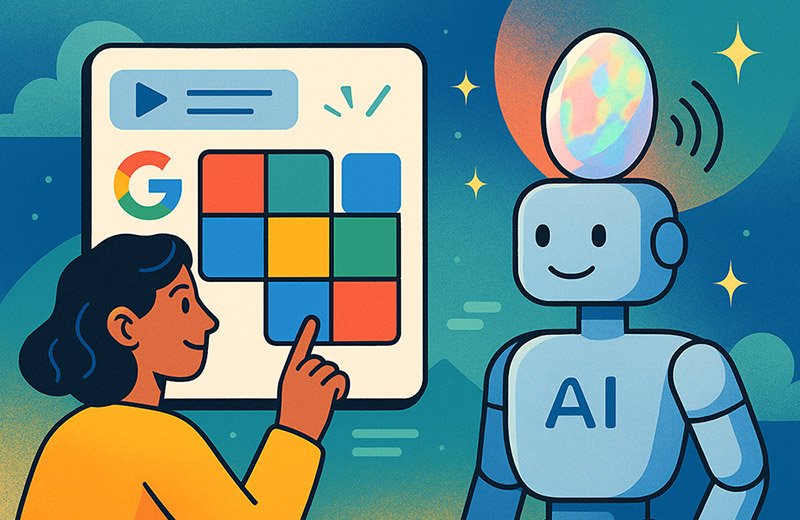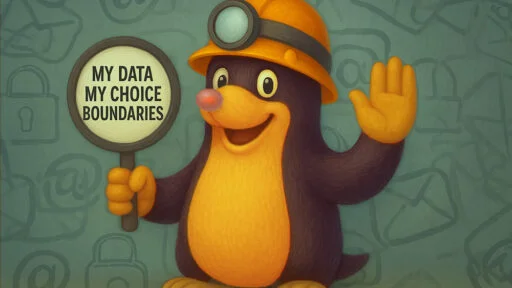Table of Contents
Say Hello to Opal
Have you ever had an idea for an app but stopped cold at the sight of code? For most people, building software has always felt out of reach, something reserved for developers or companies with deep pockets.
That’s the gap Google is trying to close with Opal, a new project from its experimental labs. With Opal, you can sketch out an idea in plain language and watch it take shape on-screen. No coding, no syntax—just describing what you want until it works. Google’s aim isn’t to edge out developers; it’s to give the rest of us a way in.
The Origin Story

Opal surfaced quietly in July 2025 as part of Google’s growing lineup of experimental tools. Its public beta arrived in the U.S. a few weeks later, inviting people to build what Google calls “AI mini-apps” through natural-language instructions and a visual editor.
The premise was straightforward: describe what you want, and Opal assembles the logic. Early users exceeded expectations, producing apps that were not just functional but inventive and surprisingly refined.
That success led to a rapid rollout. By October 2025, Opal had expanded to 15 additional countries, including Canada, India, and Japan. The move wasn’t just global—it was cultural, opening the door for a broader range of creators to experiment with AI on their own terms.
What Makes Opal Different
Opal’s appeal lies in how intuitive it feels. You don’t write code; you describe the outcome. It interprets your intent and turns it into a visual map—a network of nodes representing each action or data flow.
It’s a bit like building with digital LEGO bricks: each block performs a task, and the links between them define how your app behaves. Rearranging or expanding is simple, and you never have to touch a single line of code.
Behind the scenes, Opal draws on Google’s most advanced AI models: Gemini 2.5 for language, Imagen 4 for visuals, and Veo 3 for video generation. They act less like invisible engines and more like collaborators.
Speed is where the magic really shows. A rough thought—“I wish I could turn my meeting notes into slides automatically”—can become a working mini-app in minutes. Sharing it is as easy as sending a Google Doc link.
For newcomers, Opal includes a growing library of templates you can remix or customize. It’s part sandbox, part classroom, part creative playground.
Why It Matters
For individuals and teams alike, Opal removes friction. Non-technical people can now automate tasks, prototype ideas, and test creative concepts without waiting for developer support.
Businesses see it as an innovation engine—a way to empower employees to experiment, iterate, and solve problems independently. A marketing coordinator might create a caption generator. A teacher might design a study-prompt app. The result is time saved and imagination set loose.
It also lowers the barrier to entrepreneurship. Instead of hiring a developer to build a prototype, creators can develop their own Minimum Viable Products directly in Opal—faster, cheaper, and with complete control over their ideas.
Because it integrates seamlessly with Google Docs, Sheets, and Slides, Opal feels like a natural extension of familiar tools. And for now, it’s free—a standing invitation to explore.
The Buzz and the Bumps
No breakthrough comes without quirks. Opal’s beta version still has its share of bugs, odd responses, and a learning curve for users curious about what’s happening under the hood. These are growing pains, not red flags.
There’s also a broader conversation about ownership and understanding. If an AI helps build your app, who owns it? And could “vibe-coding”—creating through natural language—lead to complex systems that even their makers can’t fully explain?
Then there’s Google’s reputation for shelving experiments. The company’s “Google Graveyard” looms large, but the global rollout suggests Opal is meant to last.
Power users describe it as a powerful automation builder, not a full-scale developer replacement. It is best suited for small workflows, prototypes, and creative tools rather than enterprise platforms.
Looking Ahead
Google seems serious about Opal’s future. The team is already testing updates like real-time debugging, faster rendering, and a richer library of templates for everything from classroom tools to data dashboards. A longer-term roadmap mentions support for external databases and more complex business logic, signs that Opal is slowly moving from experiment to full-fledged platform.
Users are also talking about community-made plugins: small add-ons built and shared by creators inside the ecosystem, much like open-source projects that grow through collaboration.
But perhaps the most interesting shift isn’t technical at all. Opal suggests a future where coding isn’t the skill that matters most — it’s being able to describe a problem clearly enough for a machine to help solve it.
The Takeaway
Opal is more than a clever experiment; it’s a preview of how creation itself might change. It imagines a future where ideas move straight from thought to action, and where the power to build isn’t limited by syntax or skillset.
It’s early, but the promise of a democratized development method that invites anyone to explore, iterate, and create is real.
Whether you’re sketching a startup concept, building a classroom tool, or simply testing an idea, Opal offers a new way forward.
No code. No gatekeepers. Just curiosity and a blank digital canvas.
Recommended Internal Links
- AI Tools and Discoveries
- Google Trends and the Rise of AI
- Fiverr Freelance Platform Guide — tie-in for creators exploring new tech skills






